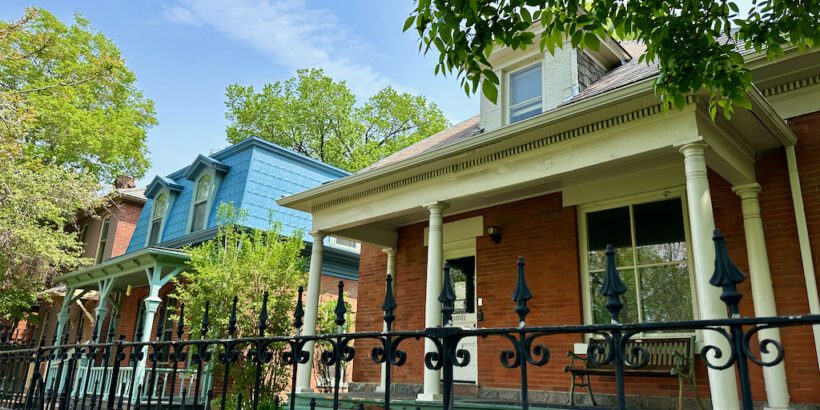Ninth Street Historic Park, a hidden gem nestled in Denver, offers a unique opportunity to take a captivating step back in time. As you enter its quarters, you’ll find yourself transported to an era dating back to near the city’s formation.
This park not only allows you to immerse yourself in the past but it’s also an ideal destination to escape the hustle and bustle of modern life with its serene environment. Whether you seek a rich encounter with history or just some solace, Ninth Street Historic Park provides an idyllic setting to visit.
Table of Contents
What is Ninth Street Historic Park?
Ninth Street Historic Park is a park that houses an old city block containing 14 homes built between 1873 to 1905. It’s known as the oldest restored residential block in the Denver community.
This area, referred to as Auraria, is located on the western banks of the historic Cherry Creek. A prehistoric meeting place for the Arapaho, it also was here that the Russell brothers from Georgia marked out a townsite in October 1858, just a month prior to the establishment of Denver City.
The name Auraria means “gold region” and was named for the gold mining settlement of Auraria, Georgia.
Initially, Auraria and Denver City were competitors vying for economic growth and dominance in the region. However, the rivalry was short-lived. Recognizing the advantages of a unified and consolidated community, leaders from both settlements agreed to merge in 1860, forming the consolidated City of Denver.
Nevertheless, over the years, Auraria thrived as its own community. Initially inhabited by German and Irish immigrants, it gradually became more diverse with the inclusion of Jewish, Hispanic, and other families.
However, the area eventually transformed into an industrial neighborhood and was severely impacted by the devastating flood of 1965 (which we learned all about while exploring the nearby Confluence Park).
During the reconstruction efforts in the late 1960s, the Denver Urban Renewal Authority planned to clear over 120 acres for campus construction, which included the demolition of the Ninth Street block.
Fortunately, Historic Denver, Inc. spearheaded preservation initiatives and successfully raised nearly $1 million required for restoration. Thanks also to the efforts of over 900 individuals corporations and foundations, the street was saved and transformed into a park, opening in 1977.
Today, this 3-acre park is listed on the National Register of Historic Places and has been designated as a historic district by the Denver Landmark Preservation Commission.
Related: How to visit the oldest standing structure in Denver
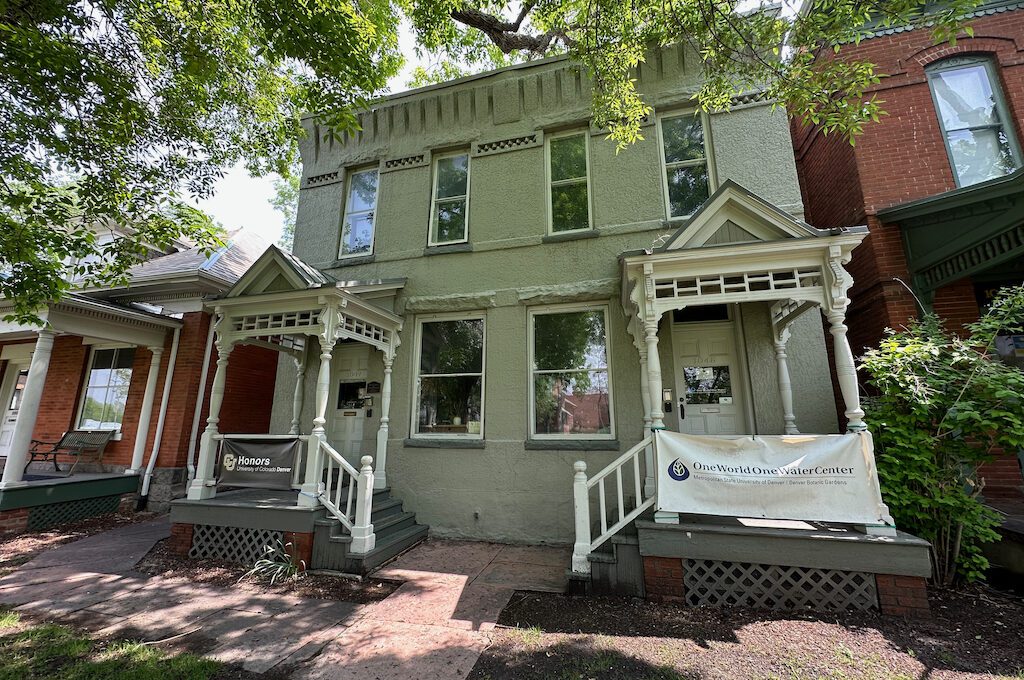
How to get to Ninth Street Historic Park
Ninth Street Historic Park is located on the Denver Auraria Campus, which is home to three separate institutions: the University of Colorado Denver (UCD), Metropolitan State University of Denver (MSU Denver), and the Community College of Denver (CCD).
The address is: 906 Curtis Street, Denver, CO 80204 and it’s open 6 AM to 10 PM.
There is no charge for admission so it is 100% free to visit. However, the nearby parking lots may require you to pay.
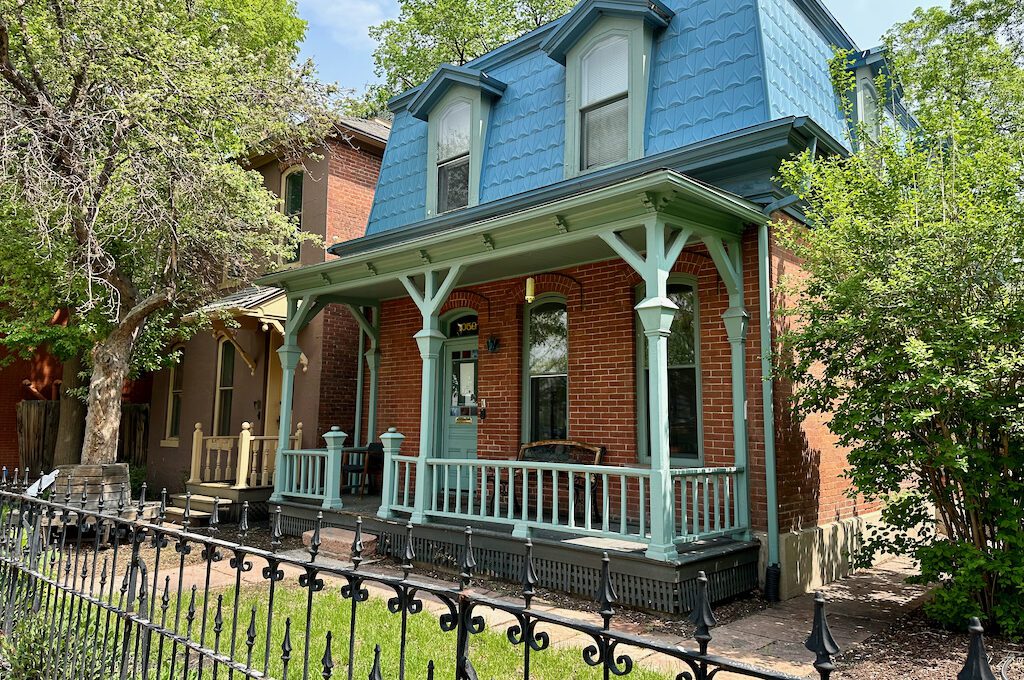
Visiting Ninth Street Historic Park
We visited on a nice, sun-drenched afternoon and had the entire park to ourselves for the most part.
I was really looking forward to this visit because I had never really seen a park quite like this with rows of time-honored buildings preserved in such a compact area. Adding to the uniqueness, the park is also situated within a large college campus, containing multiple institutions.
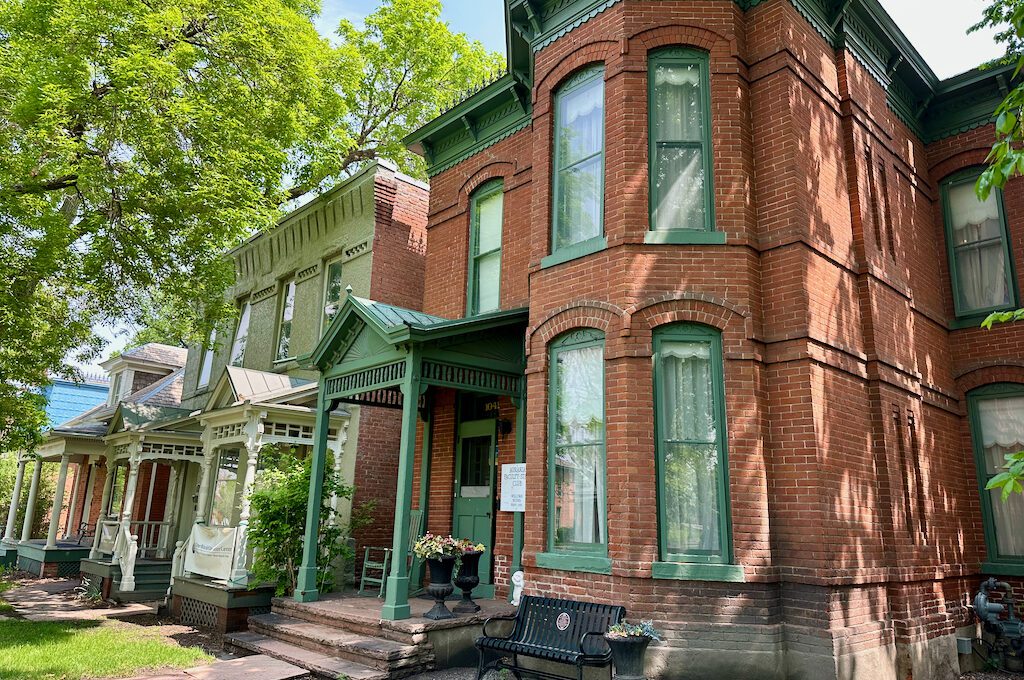
I think the best way to explore Ninth Street Historic Park is to just start on one corner and work your way down eventually making a “U” as you return along the path on the other side of the greenway. It’s a very small park so it doesn’t take very long to see everything. And you for sure will not get lost. Or if you do, you may be navigationally challenged beyond help!
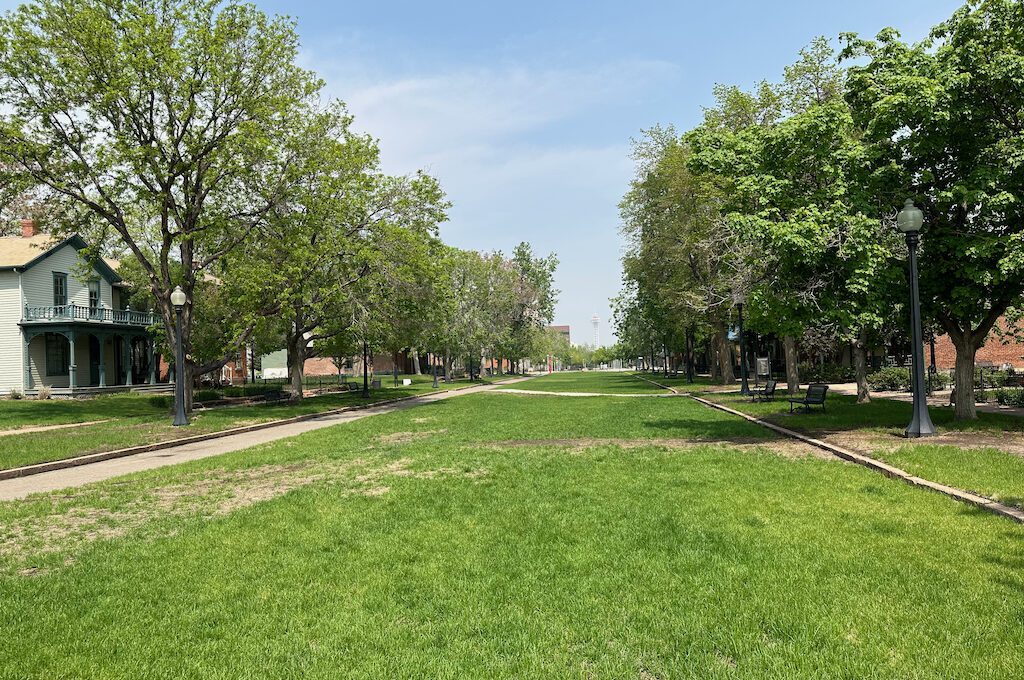
The walkways are well shaded by lots of trees making it feel amazing even on a warm day as you step deeper into the annals of history. Only “authoritatively accurate” plants were used for the restored gardens surrounding the homes and the original granite curbing was left alone.
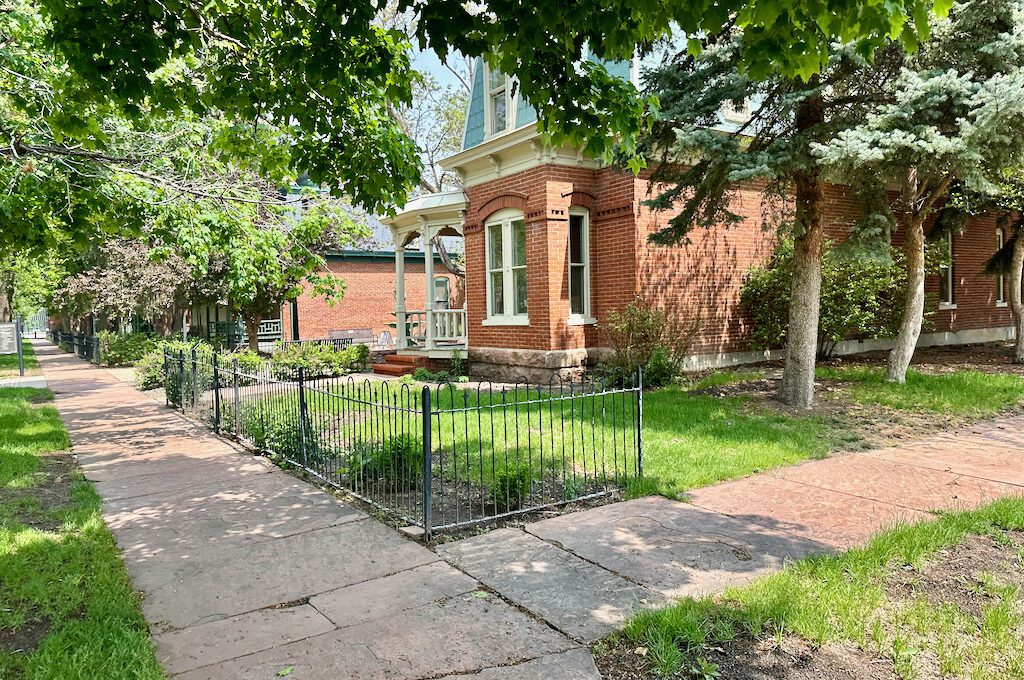
Outside of each building, you’ll find an interpretive panel to help you gain some insight into the structure and some of the unique local design qualities.
You’ll see the date of construction, the original owner, and the type of architectural style. Although some of the houses look similar, there are quite a few different types of architectural styles that you’ll see, which is a large part of the charm of this place.
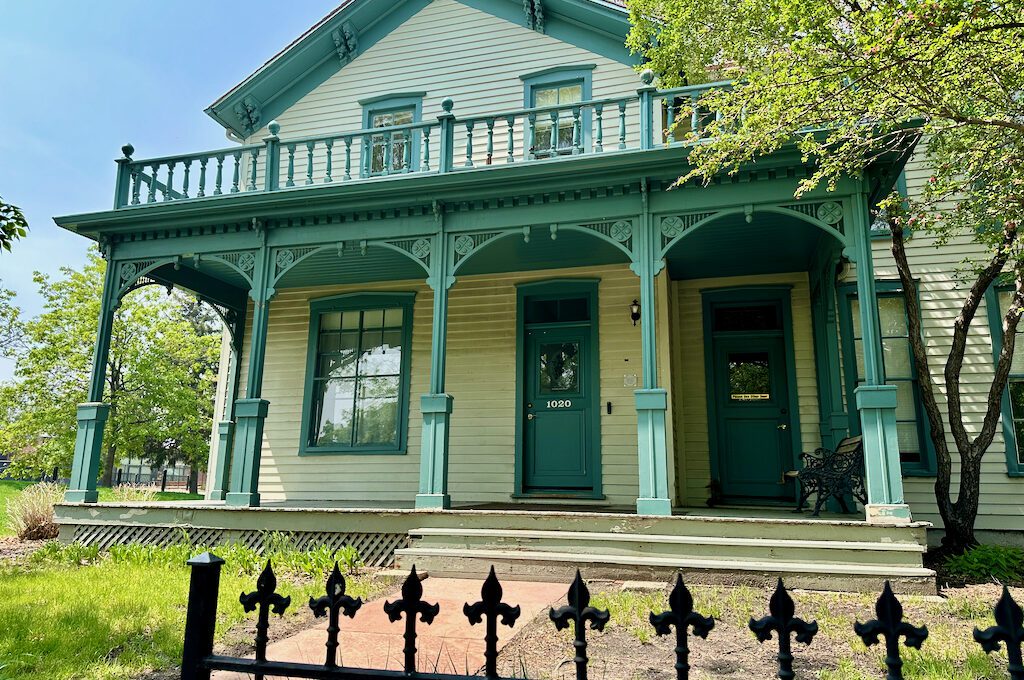
From classic cottages, exuding timeless charm, to Victorian marvels adorned with exquisite embellishments, the architectural repertoire is impressive. Among them, make sure not to miss “the most perfectly proportioned and tastefully embellished Victorian house in Denver.”
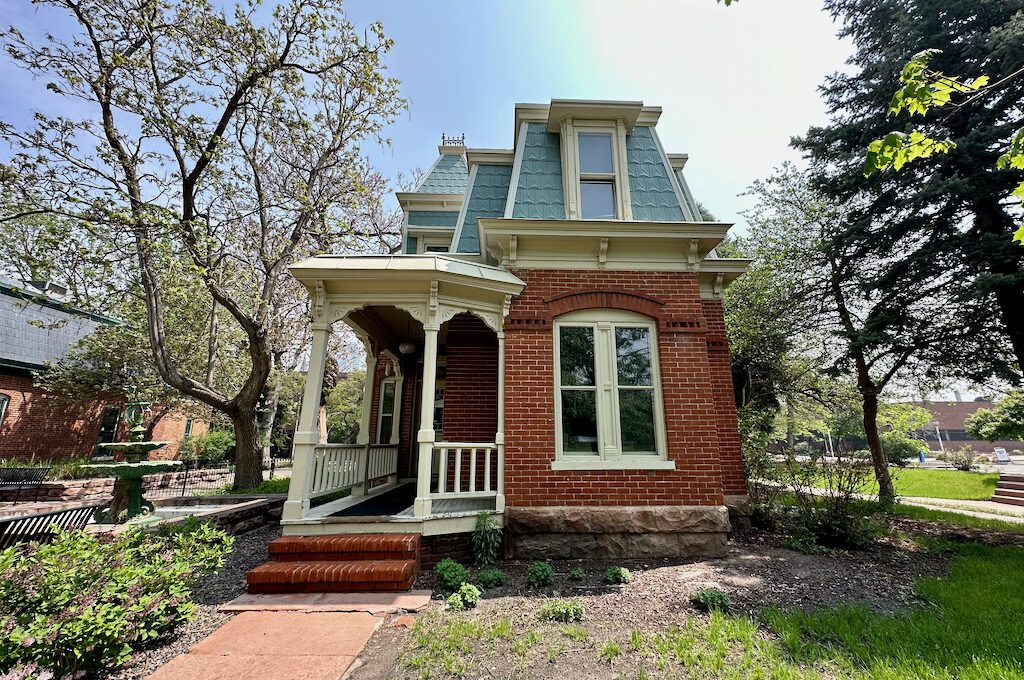
You can also get some background information on the owners as well as interesting tidbits about the old pioneer days. It’s fascinating to think that some people would have started off with such an arduous trek over untamed terrain before ending up in one of these exquisite houses in a peaceful neighborhood.
The homes are very beautiful but what you’re looking at is essentially what the middle class existence looked like back in the late 1800s.
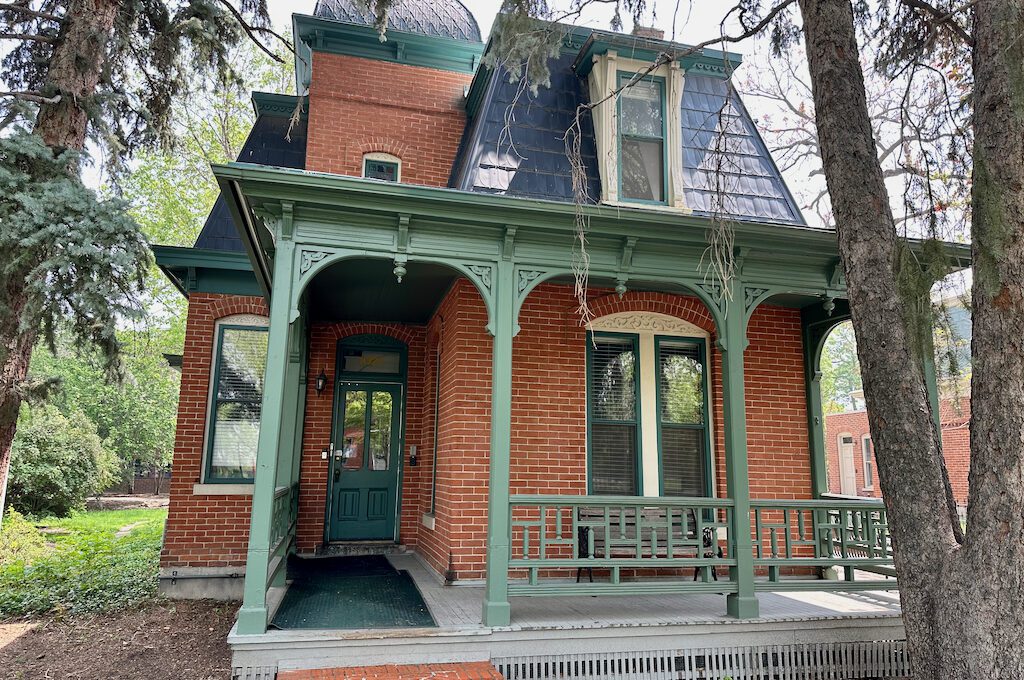
Another thing that makes this place stand out is that these old structures are still in use today.
Some are utilized by the nearby colleges such as the Colorado University Denver English department where they have their main offices.
Other buildings house headquarters for honors programs, marketing and communications, and other student related activities. Interestingly, the old Mercantile building is now a well-rated Mexican restaurant called Los Molinos.
If you want to find out more about the history of the park, you can check out these reading materials.
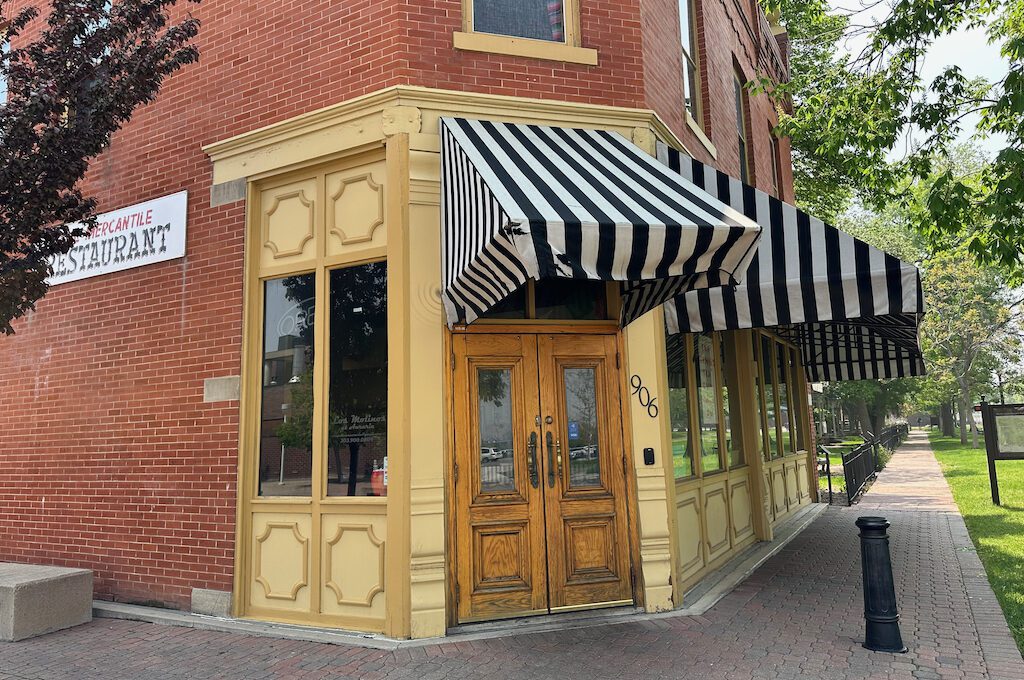
Final word
The experience of visiting this park offers a remarkable window into the lives of middle-class residents during the late 1800s.
A a tangible connection to the past, the park allows us to transport ourselves back in time, envisioning the daily routines and interactions of the local inhabitants. As you roam through the neighborhood, it’s easy to imagine past residents heading down these paths on the way to hopping on the Denver City Tramway to get to work or to make it to a market or show.
I’m really grateful that they were able to preserve this little nugget of history and I think it’s a great place to visit for those interested in Denver’s early history.
Daniel Gillaspia is the Founder of UponArriving.com and the credit card app, WalletFlo. He is a former attorney turned travel expert covering destinations along with TSA, airline, and hotel policies. Since 2014, his content has been featured in publications such as National Geographic, Smithsonian Magazine, and CNBC. Read my bio.

